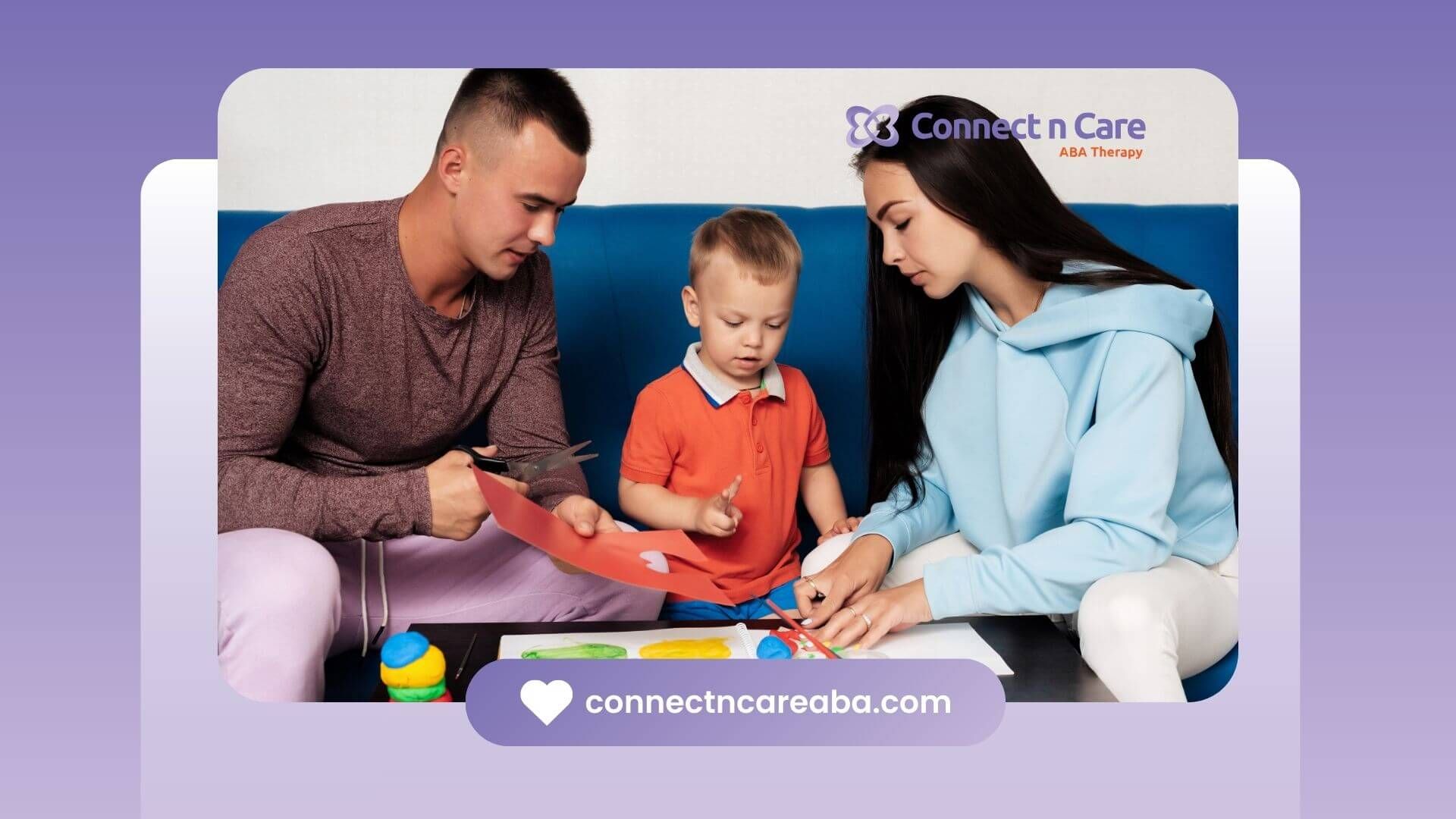In households where a member has autism spectrum disorder (ASD), safety goes beyond locks and gates. Many individuals with ASD experience altered perceptions of sensory stimuli, which can create challenges in their day-to-day environments. Simple yet effective autism-friendly home safety tips can help families reduce risks, ease anxiety, and promote independence without major renovations.
This guide presents practical strategies for crafting a safe, soothing living space. It covers sensory profiling, calming room setups, physical safeguards, smart home integrations, visual supports, emergency planning, and caregiver wellbeing. Each section offers clear steps and examples backed by expert sources.
Caregivers, therapists, and educators in North Carolina (and beyond) can apply these recommendations room by room. Small changes, like swapping bulbs or adding a motion sensor, add up to a more secure, supportive home.
Understand Sensory Needs
Designing with sensory considerations at the core is essential. Sensory-friendly design such as soundproofing, quiet appliances, and softer textures can help limit overload and create a calming atmosphere for individuals with autism. Mapping out sensory profiles guides targeted modifications.
A useful way to visualize hypersensitivity (over-response) versus hyposensitivity (under-response) is a simple comparison:
| Sensory Input | Hypersensitivity Response | Hyposensitivity Response | Example Accommodation |
|---|---|---|---|
| Visual | Eye rubbing, avoidance | Seeking bright lights | Dimmable or indirect lighting |
| Auditory | Covering ears, agitation | Craving loud noises | Sound-absorbing panels, headphones |
| Tactile | Refusing certain fabrics | Pressing or rubbing textures | Soft clothing, weighted blankets |
| Olfactory | Discomfort from strong scents | Sniffing strong aromas | Mild diffusers, scent-free cleaning products |
Recognize Sensory Overload
Common signs of overload include withdrawal, irritability, or sudden meltdowns. Identifying triggers, like flickering lights or echoing hallways, helps in prioritizing fixes. Caregivers should look for:
- Physical cues (covering ears, squinting, pacing)
- Behavioral shifts (sudden tantrums, excessive seeking of stimulation)
- Changes in routine engagement (refusing tasks, hiding)
Visual Stimuli
Busy patterns, bright walls, or cluttered surfaces can overload the visual channel. Replacing harsh fluorescents with soft, non-flickering bulbs reduces strain. Keeping décor minimal and using plain storage bins maintain a calm field of view.
Auditory Needs
Unexpected noises, like dishwasher cycles, doorbells, echoing voices, can prompt distress. Introducing quiet appliances and sound-absorbing materials (rugs, heavy curtains, acoustic panels) cuts down on intrusive sounds. White noise machines or calming playlists can mask background hums.
Olfactory Sensitivities
Some individuals react strongly to strong odors. Overly fragrant cleaners or perfumes may trigger anxiety. Opting for unscented products and diffusing gentle aromas like lavender or eucalyptus supports a neutral scent profile.
Conduct Sensory Assessment
A step-by-step evaluation ensures consistent data collection:
- Observe reactions in different rooms over several days.
- Note specific triggers and preferred comforts.
- Assign simple ratings (1–5) to each sensory input.
- Trial one adjustment at a time, recording changes.
- Review results weekly and refine the environment accordingly.
Documenting patterns in a sensory diary helps caregivers and therapists align on priorities.
Design Calming Spaces
Once sensory profiles are clear, transforming rooms into soothing retreats becomes more focused. A calming space reduces anxiety and offers a controlled environment for downtime or learning.
Soft furnishings, muted palettes, natural elements like potted plants, and plush rugs combine to soften harsh edges. Adjustable lighting schedules—bright in the morning, dim in the evening—mimic natural rhythms and support smoother transitions.
Create Quiet Zones
Dedicate a low-traffic corner for relaxation. Options include:
- A small pop-up tent with cushions and a soft floor mat
- A bean-bag nook flanked by acoustic panels
- A corner sofa with plush throws and a side table for fidget tools
Portable dividers or tall bookshelves can define the area without permanent changes.
Use Soothing Colors And Lighting
Visual consistency lets the eye rest. Choose wall colors and accents in soft greens, pale blues, or light grays.
Soft Nonflickering Bulbs
LED bulbs labeled “flicker-free” or premium incandescent options prevent headaches and reduce startle responses. A dimmable fixture adds flexibility for various times of day.
Neutral And Pastel Tones
An accent wall in a subdued pastel provides gentle interest. Coordinating textiles, including pillows, curtains, and rugs, in complementary shades ties the palette together without visual clutter.
Incorporate Soundproofing Materials
Effective, budget-friendly soundproofing includes:
- Thick area rugs or carpet tiles
- Heavy drapes or moving-blanket window covers
- Peel-and-stick acoustic foam panels behind electronics
- Cork or fabric-covered bulletin boards on noise-prone walls
Even simple additions soften echoes and unwanted hums.
Enhance Physical Safety
Standard safety measures remain critical when impulse control or wandering are concerns. A layered approach combines hardware, layout, and supervision cues.
Secure Doors And Windows
Smart locks, door sensors, and window alarms provide real-time alerts on mobile devices when an exit is opened. Alerts help caregivers intervene immediately and reduce wandering risks.
Install Childproof Locks And Gates
Magnetic cabinet locks on lower shelves and safety gates at stairways keep curious hands out of harm’s way. Selecting hardware with hidden external mechanisms preserves a tidy look.
Monitor Motion And Alerts
Motion sensors in hallways or near doors can trigger soft lights or gentle chimes, signaling a boundary without startling. Linked to an app, they also log movements for pattern tracking.
Arrange Furniture Safely
Anchoring tall furniture, like bookcases and dressers to walls prevents tipping. Rounded-edge tables and cushioned corner guards reduce injury risk. Ensuring clear pathways in dim areas (hallways, bedrooms) prevents trips.
Integrate Smart Home Technology
Automated systems offer consistent, programmable control over environmental factors. They reduce manual steps and support predictable routines.
Automate Lighting And Thermostat
Smart bulbs and switches can follow daily schedules or react to voice commands. Smart thermostats maintain stable temperatures, avoiding sudden hot or cold spikes that may cause discomfort.
Enable Smart Locks And Sensors
Keyless entry pads, smartphone-activated locks, and geofencing alerts keep track of everyone’s comings and goings. Integrations with home assistants let caregivers grant temporary access to service providers without sharing keys.
Deploy Audio Solutions
Automated audio hubs stream white noise, nature sounds, or personalized playlists at set times or when triggered by sensor alerts. This masks abrupt household noises and creates a predictable soundscape.
Use Voice Assistants
Hands-free voice control of lights, music, and timers empowers individuals with limited fine motor skills. Custom routines, for example, “Good morning” cues, activate a sequence of calming actions.
Monitor Cameras And Progress
Indoor cameras (with privacy controls) offer live feeds and recordings. They help therapists and caregivers review behavior patterns and refine interventions without constant in-room supervision.
| Technology | Function | Benefit |
|---|---|---|
| Smart Lighting Systems | Dimmable, color temperature | Reduces visual overstimulation |
| Smart Thermostats | Temperature scheduling | Prevents sensory overload from extremes |
| Smart Locks & Sensors | Automated locking, movement alerts | Enhances security and caregiver oversight |
| Audio Automation | Calming sounds, white noise | Masks sudden noises, supports relaxation |
| Voice Assistants | Hands-free control | Boosts autonomy |
| Camera Monitoring | Live feed and recording | Tracks activity, supports therapy insights |
Use Visual Supports
Visual cues reinforce expectations, simplify transitions, and empower nonverbal communication. Consistency is key.
Adopt Visual Schedules
Magnetic whiteboards, dry-erase charts, or digital apps display pictorial routines. Breaking down tasks, morning hygiene, snack time, and study sessions into visual steps reduces anxiety around unknowns.
Add Clear Labels And Signs
Labels on cupboards, drawers, and bins (with both words and images) streamline finding and returning items. High-contrast typography on a solid background improves readability.
Support With Pictures
Picture exchange communication systems (PECS) use laminated cards on a Velcro board. Placement near eye level encourages spontaneous requests and builds language skills.
Equip Sensory Tools And Aids
Having a toolkit of sensory aids at hand helps manage fluctuations in sensory needs. Placement in key areas supports on-the-spot relief.
Provide Weighted Blankets And Fidget Tools
Weighted blankets (5–10% of body weight) deliver gentle pressure that soothes the nervous system. Fidget spinners, stress balls, and chewable jewelry offer safe outlets for excess energy or oral sensory seeking.
Offer Noise-Canceling Headphones
During outings or gatherings, over-ear noise-canceling headphones block overwhelming sounds. Adjustable volume limits and soft ear cushions maximize comfort.
Selecting Appropriate Headphones
- Prioritize over-ear designs with minimal clamping force
- Look for passive noise isolation or active cancellation modes
- Seek models with volume caps to protect sensitive hearing
Plan For Safety Emergencies
Structured emergency plans and practiced routines reduce panic when situations escalate. Clear visuals and repetition support retention.
Develop Emergency Plans
A simple floor map with exit routes, assembly points, and phone numbers reinforces procedure. Laminated copies in common areas and the child’s bedroom serve as quick references.
Teach Self-Advocacy Skills
Role-playing drills, including fire, severe weather, and lockdown build confidence. Using consistent signals (bell ring, visual cue) helps a child know when to respond.
Store Emergency Supplies
A grab-and-go kit should include:
- Water, nonperishable snacks, a basic first-aid kit
- Flashlight with extra batteries, portable phone charger
- Personal items: favorite toy, noise-reduction ears, spare headphones
Stashing kits in multiple locations (hallway closet, car) ensures access.
Include Caregiver Wellbeing
Sustaining home safety relies on caregivers who are rested, supported, and informed. Prioritizing self-care prevents burnout and models healthy coping.
Practice Stress Management
Daily routines that include short stress-reduction breaks pay dividends. Techniques may include:
- Mindfulness meditation for 5–10 minutes each morning
- Deep breathing exercises during transition times
- Progressive muscle relaxation before bedtime
- Brief outdoor walks or gentle stretching sessions
Seek Professional Support
Counselors, support groups, and respite services offer strategies and emotional relief. Autism-focused workshops or parent training sessions deepen understanding and foster community.
Set Realistic Expectations
Perfection is neither attainable nor necessary. Delegating tasks, accepting help, and celebrating small wins create a sustainable caregiving environment.
Conclusion
Creating an autism-friendly home blends sensory insight, safety measures, and technology to build a space that feels secure and calming. Families should start by mapping sensory triggers, then tackle one room at a time—adapting lighting, adding soundproofing, and installing reliable locks. Visual schedules, sensory tools, and clear emergency plans layer extra support. Above all, caregiver wellbeing underpins lasting success. By taking methodical steps and celebrating progress, homes become nurturing environments that empower individuals with autism and everyone who cares for them.
At Connect n Care ABA, we guide families in North Carolina through this process, ensuring your home becomes a place of comfort, growth, and security.
Ready to create a supportive, autism-friendly home for your family? Schedule a consultation with us today, and let us help you implement personalized, in-home ABA strategies for a more comfortable living space.
Frequently Asked Questions
What are the first steps in making my home autism-friendly?
Start by identifying sensory triggers, such as loud noises or bright lights. Then, focus on adapting one room at a time with calming elements like soft lighting, noise reduction, and visual schedules.
How can I make my home safer for a child with autism?
Install safety measures like childproof locks, remove sharp objects, and create clear boundaries. A predictable routine and accessible emergency plans are also essential for safety.
Can ABA therapy help me create an autism-friendly home environment?
Yes! ABA therapists can guide you in identifying sensory needs, provide strategies for improving communication, and suggest specific tools to create a safe, calming home environment.
SOURCES:
https://www.pedistat.com/blog/supporting-children-with-autism-and-sensory-sensitivities-at-home
https://www.shruboak.org/self-care-for-family-members-and-caregivers-of-individuals-with-autism/
https://www.autismspeaks.org/safety-home
https://www.healthychildren.org/English/health-issues/conditions/Autism/Pages/Autism-Wandering-Tips-AAP.aspx
https://www.rwjbh.org/documents/csh/CSH.Autism.Safety-TS-FamilySafetyHandbook.ENG.Lambert.082620.pdf
https://apps.usfa.fema.gov/pdf/efop/efo48205.pdf









